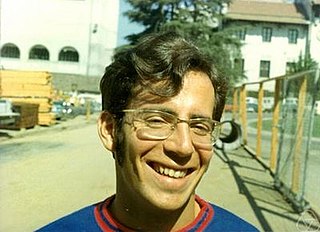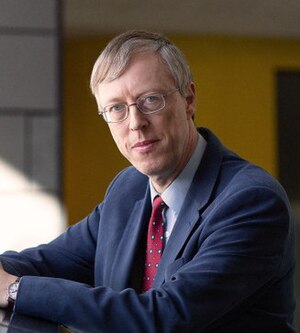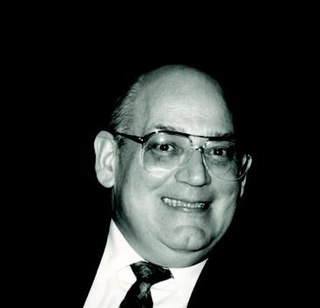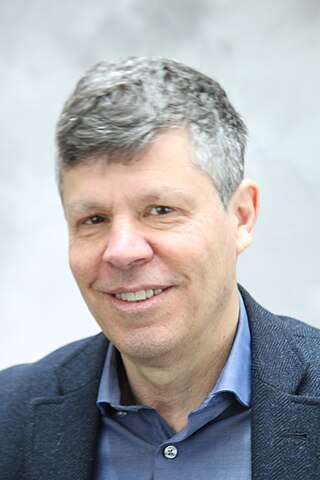
Numerical analysis is the study of algorithms that use numerical approximation for the problems of mathematical analysis. It is the study of numerical methods that attempt to find approximate solutions of problems rather than the exact ones. Numerical analysis finds application in all fields of engineering and the physical sciences, and in the 21st century also the life and social sciences, medicine, business and even the arts. Current growth in computing power has enabled the use of more complex numerical analysis, providing detailed and realistic mathematical models in science and engineering. Examples of numerical analysis include: ordinary differential equations as found in celestial mechanics, numerical linear algebra in data analysis, and stochastic differential equations and Markov chains for simulating living cells in medicine and biology.

In numerical analysis and scientific computing, a sparse matrix or sparse array is a matrix in which most of the elements are zero. There is no strict definition regarding the proportion of zero-value elements for a matrix to qualify as sparse but a common criterion is that the number of non-zero elements is roughly equal to the number of rows or columns. By contrast, if most of the elements are non-zero, the matrix is considered dense. The number of zero-valued elements divided by the total number of elements is sometimes referred to as the sparsity of the matrix.

Stanley Osher is an American mathematician, known for his many contributions in shock capturing, level-set methods, and PDE-based methods in computer vision and image processing. Osher is a professor at the University of California, Los Angeles (UCLA), Director of Special Projects in the Institute for Pure and Applied Mathematics (IPAM) and member of the California NanoSystems Institute (CNSI) at UCLA.

Matching pursuit (MP) is a sparse approximation algorithm which finds the "best matching" projections of multidimensional data onto the span of an over-complete dictionary . The basic idea is to approximately represent a signal from Hilbert space as a weighted sum of finitely many functions taken from . An approximation with atoms has the form
Lloyd Nicholas Trefethen is an American mathematician, professor of numerical analysis and head of the Numerical Analysis Group at the Mathematical Institute, University of Oxford.
Numerical linear algebra, sometimes called applied linear algebra, is the study of how matrix operations can be used to create computer algorithms which efficiently and accurately provide approximate answers to questions in continuous mathematics. It is a subfield of numerical analysis, and a type of linear algebra. Computers use floating-point arithmetic and cannot exactly represent irrational data, so when a computer algorithm is applied to a matrix of data, it can sometimes increase the difference between a number stored in the computer and the true number that it is an approximation of. Numerical linear algebra uses properties of vectors and matrices to develop computer algorithms that minimize the error introduced by the computer, and is also concerned with ensuring that the algorithm is as efficient as possible.

Nicholas John Higham FRS was a British numerical analyst. He was Royal Society Research Professor and Richardson Professor of Applied Mathematics in the Department of Mathematics at the University of Manchester.
In linear algebra, the coherence or mutual coherence of a matrix A is defined as the maximum absolute value of the cross-correlations between the columns of A.

Jinchao Xu is an American-Chinese mathematician. He is currently the Verne M. Willaman Professor in the Department of Mathematics at the Pennsylvania State University, University Park. He is known for his work on multigrid methods, domain decomposition methods, finite element methods, and more recently deep neural networks.

Richard Steven Varga was an American mathematician who specialized in numerical analysis and linear algebra. He was an Emeritus University Professor of Mathematical Sciences at Kent State University and an adjunct Professor at Case Western Reserve University. Varga was known for his contributions to many areas of mathematics, including matrix analysis, complex analysis, approximation theory, and scientific computation. He was the author of the classic textbook Matrix Iterative Analysis. Varga served as the Editor-in-Chief of the journal Electronic Transactions on Numerical Analysis (ETNA).
Yousef Saad in Algiers, Algeria from Boghni, Tizi Ouzou, Kabylia is an I.T. Distinguished Professor of Computer Science in the Department of Computer Science and Engineering at the University of Minnesota. He holds the William Norris Chair for Large-Scale Computing since January 2006. He is known for his contributions to the matrix computations, including the iterative methods for solving large sparse linear algebraic systems, eigenvalue problems, and parallel computing. He is listed as an ISI highly cited researcher in mathematics, is the most cited author in the journal Numerical Linear Algebra with Applications, and is the author of the highly cited book Iterative Methods for Sparse Linear Systems. He is a SIAM fellow and a fellow of the AAAS (2011).

Emmanuel Jean Candès is a French statistician most well known for his contributions to the field of Compressed sensing and Statistical hypothesis testing. He is a professor of statistics and electrical engineering at Stanford University, where he is also the Barnum-Simons Chair in Mathematics and Statistics. Candès is a 2017 MacArthur Fellow.

Alan Stuart Edelman is an American mathematician and computer scientist. He is a professor of applied mathematics at the Massachusetts Institute of Technology (MIT) and a Principal Investigator at the MIT Computer Science and Artificial Intelligence Laboratory (CSAIL) where he leads a group in applied computing. In 2004, he founded a business called Interactive Supercomputing which was later acquired by Microsoft. Edelman is a fellow of American Mathematical Society (AMS), Society for Industrial and Applied Mathematics (SIAM), Institute of Electrical and Electronics Engineers (IEEE), and Association for Computing Machinery (ACM), for his contributions in numerical linear algebra, computational science, parallel computing, and random matrix theory. He is one of the creators of the technical programming language Julia.
Anna Catherine Gilbert is an American mathematician who works as the Herman Goldstine Collegiate Professor of Mathematics at the University of Michigan. She also holds a courtesy appointment in electrical engineering and computer science at Michigan. Her research expertise is in randomized algorithms for harmonic analysis, image processing, signal processing, and large data sets.
Beresford Neill Parlett is an English applied mathematician, specializing in numerical analysis and scientific computation.
Laura Grigori is a French-Romanian applied mathematician and computer scientist known for her research on numerical linear algebra and communication-avoiding algorithms. She is a director of research for the French Institute for Research in Computer Science and Automation (INRIA) in Paris, and heads the "Alpines" scientific computing project jointly affiliated with INRIA and the Laboratoire Jacques-Louis Lions of Sorbonne University.
Daniel Kressner is a German numerical analyst. He has a Chair of Numerical Algorithms and High Performance Computing in the Institute of Mathematics at EPF Lausanne.

Philip N. Klein is an American computer scientist and professor at Brown University. His research focuses on algorithms for optimization problems in graphs.

Daniel B. Szyld is an Argentinian and American mathematician who is a professor at Temple University in Philadelphia. He has made contributions to numerical and applied linear algebra as well as matrix theory.











